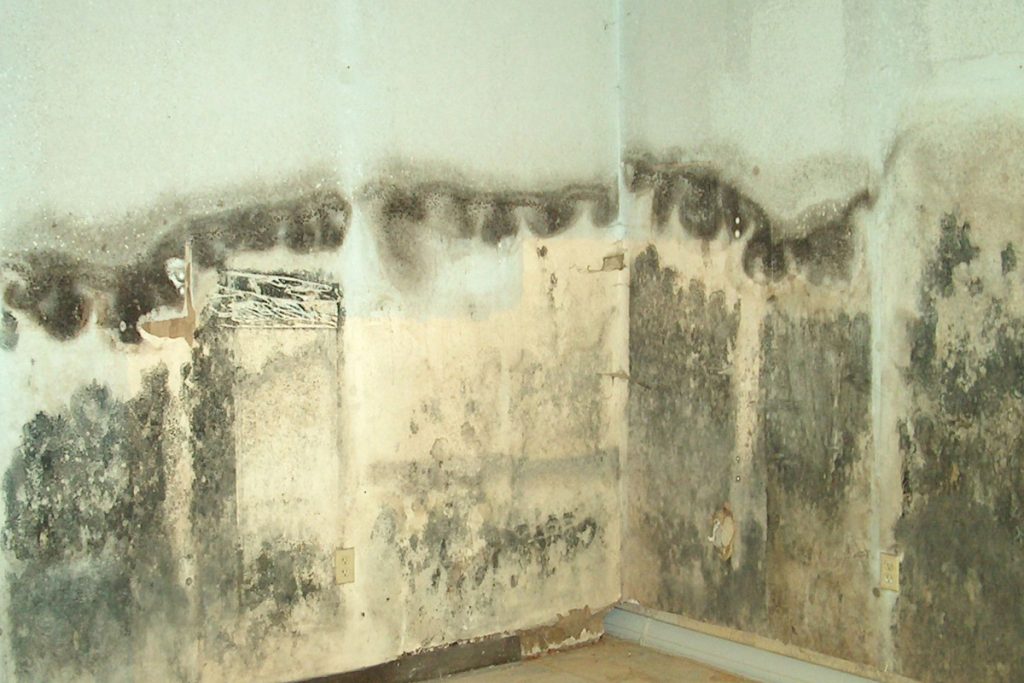Mouldy Basements Can Be a Serious Health Concern!
Most of us can recognize mould when we see it or sniff it. But did you know that aside from its unsightly appearance and musty smell, mould can be downright deadly? That’s why waterproofing basement walls makes health sense.
As parents and/or caregivers, we do all we can to ensure our two and four-legged loved ones are safe and protected within our homes. Our homes are our safe haven; they provide us with shelter and protection from the dangers that lurk outside, however, unless we are diligent about keeping our home free of excess moisture and humidity, our secure place of refuge often becomes a breeding ground for mould and mildew, posing a significant threat to our health. The risks associated with harbouring mould and mildew in our homes are great and vastly documented. This is one of the reasons that the resale of homes in which marijuana was grown requires significant mould remediation and restoration before the homes can be listed for sale on the real estate market. Recently (November 2012), experts have increasingly concluded that complete mold remediation of former grow operations in homes may not be possible after all.
Mould and Mildew
Moulds and mildew are caused by several types of fungi which readily grow in and around damp homes. They are commonly seen as fuzzy coatings sporulating on moist surfaces, such as those in basements and bathrooms. Moulds thrive and become a significant health risk when the relative humidity level in your basement is above sixty percent; they also tend to proliferate in poorly ventilated areas with little air movement to disrupt their growth. Your leaking basement walls often meet these criteria.
Do you have a recreation area in your basement? Do you or your children spend any amount of time there? Besides inhalation through general air circulation and ventilation in your home, you can also become exposed to mould and mildew through skin contact with carpets and upholstery on which mildew is present. Moulds produce toxic chemicals that are detrimental to your health and can even cause permanent damage. These toxins, along with mould fragments and spores that are released into the air, can trigger allergy symptoms even in individuals with no history of allergies. Recent studies have categorically linked mould to the rapid rise of the asthma rate over the past 20 years. A Mayo Clinic study conducted in 1999 strongly implicates household fungus as the cause of almost all the chronic sinusitis afflicting millions of Canadians. Toxic moulds can also increase your susceptibility to a wide variety of diseases by weakening your immune system.
Given all the existing data on the health dangers of indoor mould and mildew growth and the fact that the amount it would take to cause illness in an individual is presently unknown, it makes health sense to do everything you can to control the humidity in your home. You can undertake a thorough cleaning of your basement walls, carpets and upholstery to remove the visible mould and mildew, however, if the source of the moisture problems is not addressed, the mould and mildew will return and, along with the spores that linger, continue to injure and harm your family’s health.
Moisture Control Within Your Home
Whether you have a concrete block, stone, or poured concrete foundation, you must ensure that the humidity levels in your basement do not exceed recommended levels; that’s where waterproofing your basement walls becomes so critical. Problems with water leaks and basement flooding are not only a nuisance, given what we now know about mould and mildew, they may become a downright health hazard. The Canada Mortgage and Housing Corporation recommends that the relative humidity in a home should not exceed 50%; during the winter, the recommended relative humidity is 30%.
Waterproofing Basement Walls
For both the inside and the outside of your home, there are different types of materials and specialized repair techniques which can be used to waterproof your basement walls. Regardless of the repair techniques or materials utilized, it takes skill and experience to professionally repair wet and/or leaky basement walls; AquaGuard Injection & Waterproofing® has both to spare. We are the unsurpassed leader in delivering superior results to permanently resolve your wet basement problems. Whether it’s by injection, an interior weeping tile system or external excavation and waterproofing, or by any other type of proven waterproofing method, AquaGuard Injection & Waterproofing® has the solution you need to effectively stop the water from getting into your house and creating an invitation for opportunistic fungi to call your basement home.
The repair methods and materials used are primarily dictated by the foundation type and the associated problem(s). For poured concrete foundations, the materials of choice are largely polyurethane and epoxy resins. The type of resin chosen for a pressurized injection is further dictated by the conditions of the crack(s), void(s) or hole(s) in your basement wall(s). Concrete block and stone foundations require external waterproofing or internal de-watering, involving the use of materials such as air-gap membranes, rubber coatings, weeping or drain tile installation, and so on. The application of coatings such as cement, tar, paint, liquid rubber, and so on, as a water repellent on the interior of walls, is not a recommended means of waterproofing given that these materials effectively trap water in the wall(s). If there are any coatings to be applied, they must be applied only to the exterior side of foundation walls.
Quite often, the removal and disposal of stud walls and mouldy drywall is accomplished as part of the cleaning process at the time when your basement is being waterproofed. Doing otherwise would completely defeat the purpose of what you are trying to accomplish in the first place, namely, maintaining a dry, mould and mildew free, healthy home environment.
